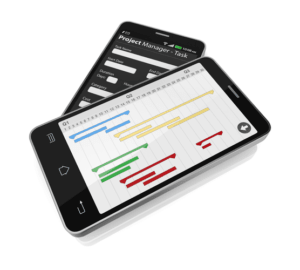
The Revenue section shows that Microsoft’s gross margin, also known as gross (annual) profit, for the fiscal year ending June 30, 2023, was $171.0 billion. This number is arrived at by deducting the cost of revenue ($74 .1 billion) from the total revenue ($245.1 billion)—in other words, revenue minus the amount that it cost to make that $245.1 billion. These are all expenses that go toward a loss-making sale of long-term assets, one-time or any other unusual costs, or expenses toward lawsuits. A business’s cost to continue operating and turning a profit is known as an expense. Some of these expenses may be written off on a tax return if they meet Internal Revenue Service (IRS) guidelines. For example, a customer may take goods/services from a company on Sept. 28, which will lead to the revenue accounted for in September.
How Can HighRadius Help Streamline and Enhance the Management of Income Summary Accounts?

At the end of each accounting period, all of the temporary accounts are closed. You might have heard people call this “closing the books.” Temporary accounts like income and expenses accounts keep track of transactions for a specific period and get closed or reset at the end of the period. This way each accounting period starts with a zero balance in all the temporary accounts, so revenues and expenses are only recorded for current years. The income summary account does not appear on income summary account any financial statement. It is a temporary account used to summarize revenues and expenses before transferring the net income or net loss to the retained earnings account on the balance sheet. After closing, its balance is reflected in the retained earnings on the balance sheet.

Get Any Financial Question Answered
- Retained earnings are defined as a portion of a business’s profits that isn’t paid out to shareholders but is rather reserved to meet ongoing expenses of operation.
- Income statements also provide a good source of analysis for investors that are willing to invest in the business.
- Operating expenses totaling $37,000 were then deducted from the gross profit to arrive at the second level of profitability – operating profit which amounted to $6,000.
- If the company profits for the year, the retained earnings will come on the debit side of the income summary account.
- But before that entry is passed, there are a few steps to the process.
- It segregates total revenue and expenses into operating and non-operating heads.
A single-step income statement is useful when your business does not have complex operations or only needs a simple statement that could report the net income of a business. Competitors also may use income statements to gain insights about the success parameters of a company, such as how much it is spending on research and development. These are all expenses linked to noncore business activities, like interest paid on loan money. Any account listed on the balance sheet is a permanent account, barring paid dividends. On the balance sheet, $75 of cash held today is still valued at $75 next year, even if it is not spent.
LIFE INSURANCE CASH SURRENDER VALUE Explained!!!
- In practice, temporary accounts require a little more attention than permanent accounts.
- Sam’s books are now totally closed for the year, and he may create the post-closing trial balance and reopen his books with reverse entries in the following steps of the accounting cycle.
- It was declared at $1.2 billion or %3.03 for each diluted common share.
- Our AI-powered Anomaly Management Software helps accounting professionals identify and rectify potential ‘Errors and Omissions’ throughout the financial period so that teams can avoid the month-end rush.
- It transfers it to a balance sheet, which gives more meaningful output for investors, and management, vendors, and other stakeholder.
- Delivered as SaaS, our solutions seamlessly integrate bi-directionally with multiple systems including ERPs, HR, CRM, Payroll, and banks.
Balances from temporary accounts are shifted to the income summary account first to leave an audit trail for accountants to follow. Following this entry, the balance of all temporary accounts, including the income summary account, should be zero. You can either close these accounts straight https://www.bookstime.com/ to the retained profits account or close them to the income summary account. After this entry is made, all temporary accounts, including the income summary account, should have a zero balance. To close a revenue account, debit the revenue account for its balance and credit the income summary account with the same amount, consolidating the revenue for the period.
How much are you saving for retirement each month?
- The net income (NI) is moved into retained earnings on the balance sheet as part of the closing entry process.
- Our solution has the ability to prepare and post journal entries, which will be automatically posted into the ERP, automating 70% of your account reconciliation process.
- The income statement is one of the three important financial statements used for reporting a company’s financial performance over a set accounting period.
- The multi-step income statement reflects comprehensively the three levels of profitability – gross profit, operating profit, and net profit.
- This income balance is subsequently reflected in the balance sheet’s owner’s equity section.
- After this entry is made, all temporary accounts, including the income summary account, should have a zero balance.
This step ensures that the revenue is accurately transferred and the account is reset for the next period. Therefore, the retained earnings account shows the earnings that are kept, net income fewer dividends in the business. Moreover, the closing procedure shows that revenue, expense, and dividend accounts are retained earnings subcategories. It is also commonly found that an income summary is confused with an income statement. Despite the fact that both provide insights into the financial health of an organization or an individual, the former is a temporary account and the latter is a permanent account. Moreover, the entries in the income statement are finally transferred into the income summary after which, the deductions are made.

- This account is a great tool to show the net profit or loss of a company for any financial years.
- The customer may be given a 30-day payment window due to his excellent credit and reputation, allowing until Oct. 28 to make the payment, which is when the receipts are accounted for.
- Payment is usually accounted for in the period when sales are made or services are delivered.
- However, it remains a key concept in understanding how the accounting cycle works, especially in manual or educational contexts.
- The income summary is a temporary account used to summarize revenues and expenses for the specific purpose of closing out accounts at the end of a financial period.
- In this case, it’s a credit balance of $15,000 ($100,000 – $85,000), which represents the net income.
- It is called the single-step income statement as it is based on a simple calculation that sums up revenue and gains and subtracts expenses and losses.
The other side of the entry (credit) bookkeeping goes to the income summary account. The primary purpose of an income statement is to convey details of profitability and business activities of the company to the stakeholders. It also provides detailed insights into the company’s internal activities.

The last closing entry reduces the amount retained by the amount paid out to investors. Accountants use an account called the income summary to close the year for temporary accounts. The purpose of this article is to define the income summary account and look at a helpful overview so that this account becomes less of a mystery. A single-step income statement displays the revenue, expenses, and gains or losses generated by a company. The multi-step income statement reflects comprehensively the three levels of profitability – gross profit, operating profit, and net profit.
